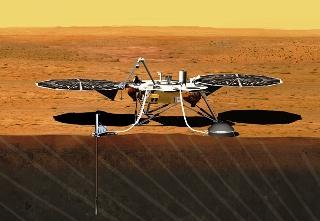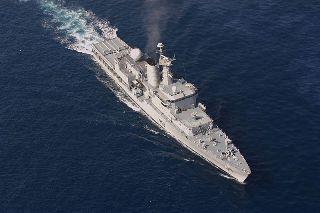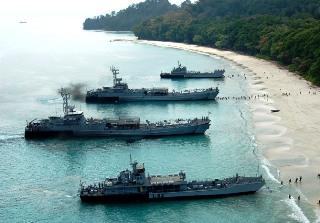
Artist's Concept of InSight Lander on Mars. Photo: NASA/JPL-Caltech
WASHINGTON (PTI): NASA has narrowed down to four potential landing sites for its next mission to Mars in 2016, aimed at studying the red planet's interior.
The stationary Interior Exploration Using Seismic Investigations, Geodesy and Heat Transport (InSight) lander is scheduled to launch in March 2016 and land on Mars six months later.
The mission will touch down at one of four sites selected in August from a field of 22 candidates. All four semi-finalist spots lie near each other on an equatorial plain in an area of Mars called Elysium Planitia, NASA said.
"We picked four sites that look safest," said geologist Matt Golombek of NASA's Jet Propulsion Laboratory in Pasadena, California.
"They have mostly smooth terrain, few rocks and very little slope," he said.
Scientists will focus two of NASA's Mars Reconnaissance Orbiter cameras on the semi-finalists in the coming months to gain data they will use to select the best of the four sites well before InSight is launched.
The mission will investigate processes that formed and shaped Mars and will help scientists better understand the evolution of our inner solar system's rocky planets, including Earth.
Unlike previous Mars landings, what is on the surface in the area matters little in the choice of a site except for safety considerations.
"This mission's science goals are not related to any specific location on Mars because we're studying the planet as a whole, down to its core," said Bruce Banerdt, InSight principal investigator at JPL.
"Mission safety and survival are what drive our criteria for a landing site," said Banerdt.
Each semifinalist site is an ellipse measuring 130 kilometres from east to west and 27 kilometres from north to south.
Engineers calculate the spacecraft will have a 99-per cent chance of landing within that ellipse, if targeted for the centre.
Elysium is one of three areas on Mars that meet two basic engineering constraints for InSight. One requirement is being close enough to the equator for the lander's solar array to have adequate power at all times of the year.
The elevation must be low enough to have sufficient atmosphere above the site for a safe landing. The spacecraft will use the atmosphere for deceleration during descent.
 Previous Article
Previous Article Next Article
Next Article













The Indian Air Force, in its flight trials evaluation report submitted before the Defence Ministry l..
view articleAn insight into the Medium Multi-Role Combat Aircraft competition...
view articleSky enthusiasts can now spot the International Space Station (ISS) commanded by Indian-American astr..
view article